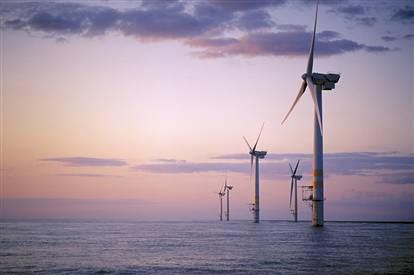 A Frost & Sullivan research report titled Investment Opportunities in the Wind Energy Sector in Europe provides an overview of opportunities in geographic locations well-suited for wind energy production, parts of the value chain and other ancillary markets. In this research, the company’s analysts examine onshore and offshore wind energy markets in terms of countries, value chain, and peripheral markets.
A Frost & Sullivan research report titled Investment Opportunities in the Wind Energy Sector in Europe provides an overview of opportunities in geographic locations well-suited for wind energy production, parts of the value chain and other ancillary markets. In this research, the company’s analysts examine onshore and offshore wind energy markets in terms of countries, value chain, and peripheral markets.
This analysis is available through the Energy & Power Growth Partnership Services program. This comprehensive, objective information according to Frost & Sullivan helps companies mitigate risk, identify new opportunities, and drive effective strategies for growth.
Volatility of oil and gas prices, energy security and aging fossil-fuelled power plants are still driving the growth of wind energy according to the 2020 European Union (EU) Renewable Energy Directive. The region’s pioneering and technology leadership in wind power is attracting investors. Although the onshore wind energy market is reaching saturation in some countries, the market fundamentals in Europe continue to bolster other parts of the wind energy market. Similarly, while western European countries such as Germany and Spain are mature, other countries are compensating for their dip in sales. “The offshore wind energy market is gathering pace, especially in the installation vessels as well as construction and component production segments,” says one analyst on research. “Ancillary markets, including services and construction, are also beginning to attract both market participants as well as investors.”
Although the market is looking to regain lost ground following the financial downturn, the steep fall in demand for turbines and wind energy installation projects have compelled many market participants to move to higher growth markets such as the United States and China. A lack of liquidity among participants has put the brakes on the double-digit growth rates seen prior to 2007. Further, the decrease in oil and gas prices during the slowdown will make it less attractive for utilities to invest in wind-energy projects. However, investment cycles for power plants are always long term, and there is hope that this setback is only a blip in business cycles.
Offshore wind energy installations are more productive than onshore projects because of steadier wind there. While average wind speed on land is 7m/sec, offshore speed is higher, often reaching 9 to 10m/sec. “Load factors are also double those of onshore wind,” notes the analyst. “Moreover, project economics and economies of scale encourage developers and owners to build large-scale projects (greater than 100 MW), thereby making a bigger contribution to a renewable-energy target.” Such new and large power plants are the order of the day, as many power plants in Europe will reach the end of their useful life over the next decade and are slated for decommissioning by 2020. The rise in demand for electricity will place additional pressure on the electricity infrastructure. Therefore, it is imperative for governments and utilities to invest in offshore power plants.
Filed Under: News




